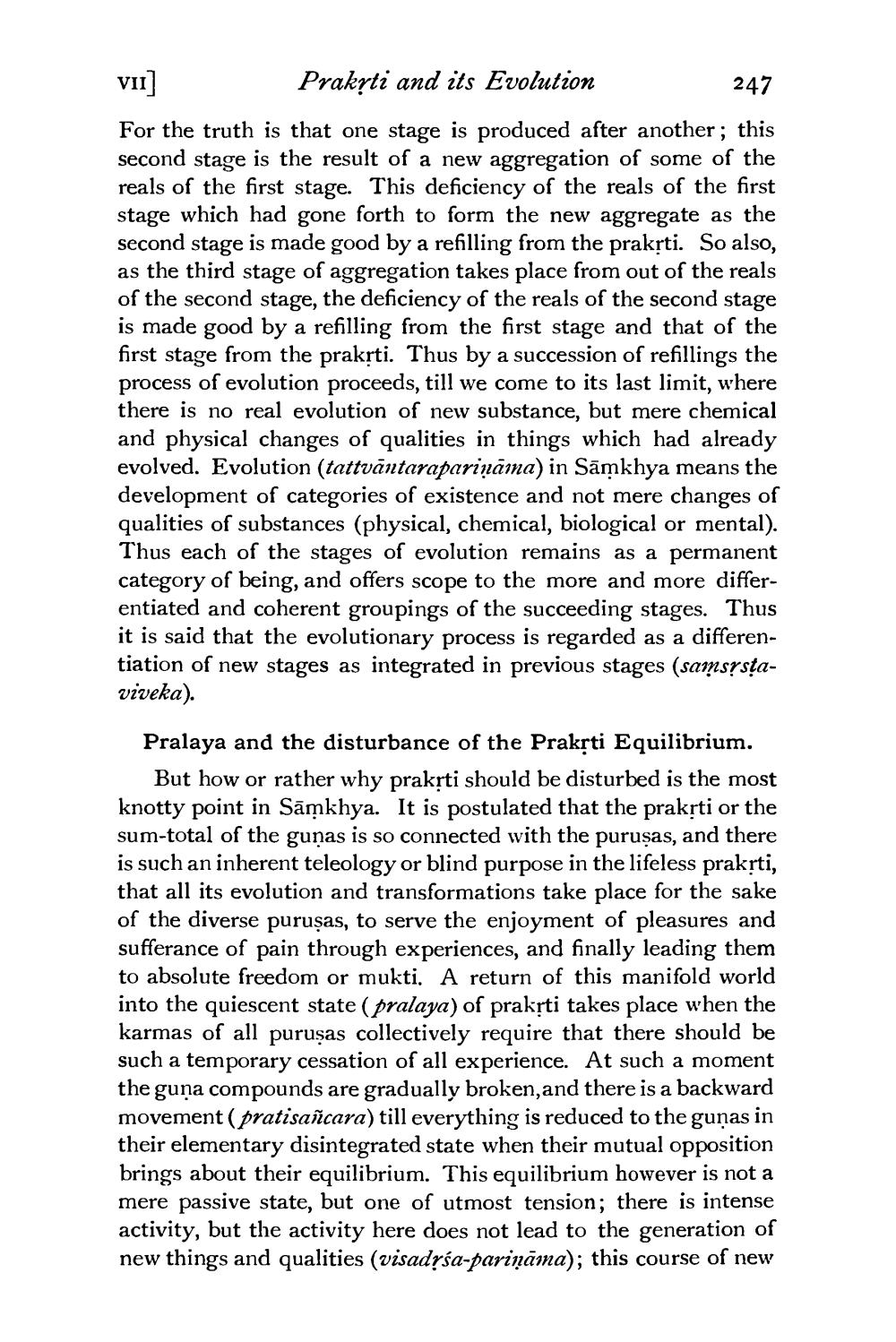________________
VII]
Prakrti and its Evolution
247
For the truth is that one stage is produced after another; this second stage is the result of a new aggregation of some of the reals of the first stage. This deficiency of the reals of the first stage which had gone forth to form the new aggregate as the second stage is made good by a refilling from the prakṛti. So also, as the third stage of aggregation takes place from out of the reals of the second stage, the deficiency of the reals of the second stage is made good by a refilling from the first stage and that of the first stage from the prakṛti. Thus by a succession of refillings the process of evolution proceeds, till we come to its last limit, where there is no real evolution of new substance, but mere chemical and physical changes of qualities in things which had already evolved. Evolution (tattväntarapariņāma) in Sāmkhya means the development of categories of existence and not mere changes of qualities of substances (physical, chemical, biological or mental). Thus each of the stages of evolution remains as a permanent category of being, and offers scope to the more and more differentiated and coherent groupings of the succeeding stages. Thus it is said that the evolutionary process is regarded as a differentiation of new stages as integrated in previous stages (samsṛstaviveka).
Pralaya and the disturbance of the Prakṛti Equilibrium.
But how or rather why prakṛti should be disturbed is the most knotty point in Samkhya. It is postulated that the prakṛti or the sum-total of the gunas is so connected with the purusas, and there is such an inherent teleology or blind purpose in the lifeless prakṛti, that all its evolution and transformations take place for the sake of the diverse purusas, to serve the enjoyment of pleasures and sufferance of pain through experiences, and finally leading them to absolute freedom or mukti. A return of this manifold world into the quiescent state (pralaya) of prakṛti takes place when the karmas of all purusas collectively require that there should be such a temporary cessation of all experience. At such a moment the guna compounds are gradually broken, and there is a backward movement (pratisañcara) till everything is reduced to the gunas in their elementary disintegrated state when their mutual opposition brings about their equilibrium. This equilibrium however is not a mere passive state, but one of utmost tension; there is intense activity, but the activity here does not lead to the generation of new things and qualities (visadṛśa-pariņāma); this course of new




